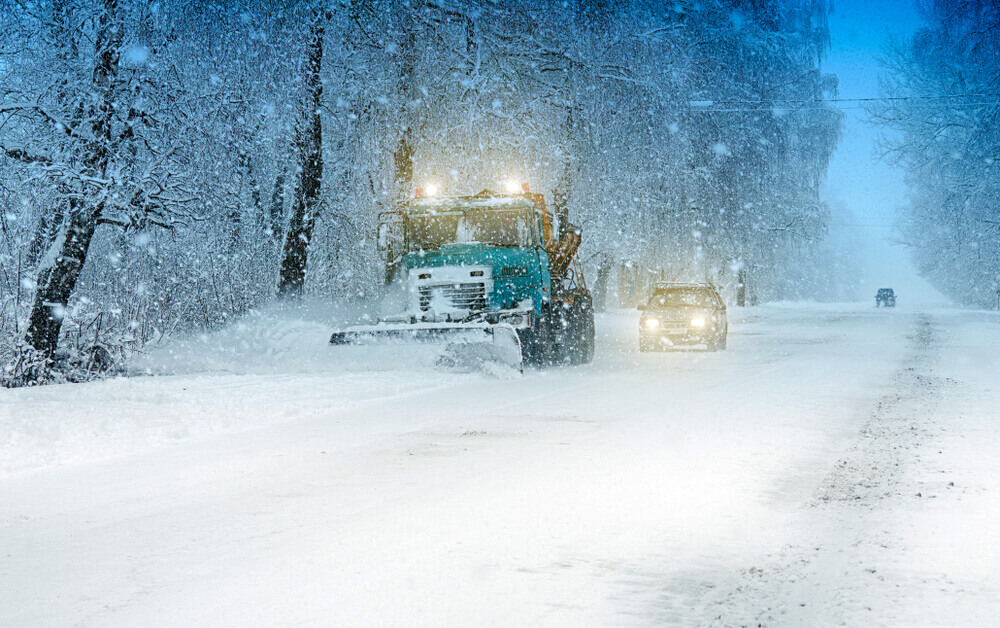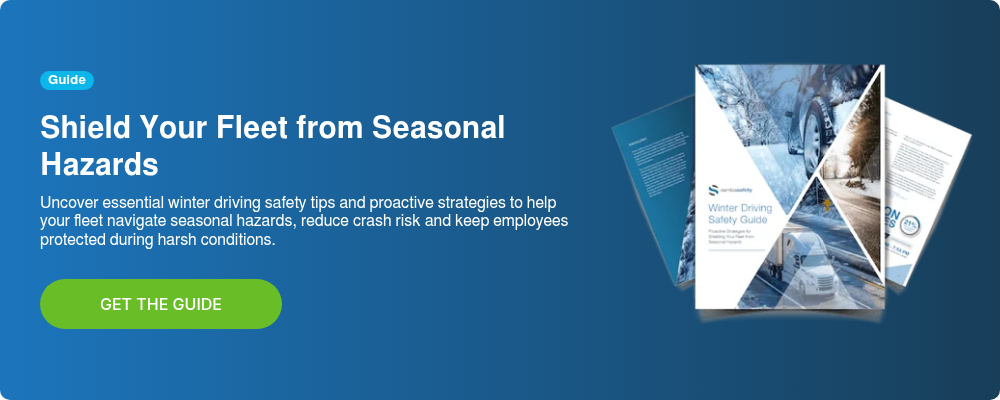
Over 70% of the roads in the United States are located in snowy regions. These areas receive an average of more than five inches of snowfall each year.
These snowy roads are typically cleared by snowplows to ensure they are as safe as possible for drivers to navigate. But for three straight years, snowplow drivers have been in high demand across the entire country.
Snowplow driver shortages mean that the roads will go unplowed longer, making them even riskier for your fleet drivers and those they share the road with.
Download Our Free Winter Driving Safety Resources Bundle for Fleets!
Snowplow Driver Shortage Challenges
Transportation departments have the huge responsibility of keeping the nation’s roadways open and operating during winter storms.
“The primary goal is to ensure the safety of the traveling public, but more importantly, we need to give police, fire and EMS crews the ability to reach people during emergencies,” said Executive Director Jim Tymon of the American Association of State Highway and Transportation Officials (AASHTO). “Unfortunately, this season, our survey shows that the shortage of snowplow drivers is making this critical work far more difficult.”
The survey conducted in early 2022 shows that 84% of respondents indicated they are experiencing higher-than-normal vacancies of snowplow operators during the winter season.
The Missouri Department of Transportation (MoDOT) recently held its statewide winter weather drill to train their plow drivers before the next storm hits, but they were only able to train about two-thirds of the operators needed to cover their winter routes.
“We had staffing shortages last season… this year that’s almost double,” said Becky Allmeroth, Chief Safety Operations Officer of MoDOT. “So (we are) 30% short of all the operators that we need to do 2, 12-hour shifts. So it’s going to be a real challenge.”
This is consistent with the overall driver shortage affecting companies across the country. According to a yearly survey conducted by the American Transportation Research Institute (ATRI), the driver shortage has been a top concern for motor carriers for half a decade and counting. If these trends continue, the shortage could surpass 160,000 drivers in 2030.
The Dangers of Snow and Ice for Fleet Drivers
This increase in treacherous snow and ice on the road will likely cause a dangerous rise in crash risks.
Snow greatly reduces pavement friction and vehicle maneuverability, causing arterial speeds to decline by 30-40%. Freeway speeds also reduce by 2-13% in light snow and 5-40% in heavy snow.
Other dangers from unplowed snow include:
- Reduced visibility
- Reduced roadway capacity
- Increase in roadside hazards
- Increase in infrastructure damage
Each year, over 1,300 people are killed and more than 116,800 people are injured in vehicle crashes on snowy, slushy or icy pavement, while nearly 900 people are killed and nearly 76,000 people are injured in vehicle crashes during snowfall or sleet.
The Importance of Proactive Winter Driving Safety Training
With this in mind, it’s critical for companies to require ongoing winter driver safety training for their fleet drivers. This ensures they have the knowledge and skills needed to stay safe as they navigate these increasingly dangerous road conditions.
In our recent blog, we explore important winter driver safety training topics fleets should train on before they hit the roads this snowy season. These include training to help:
- Combat bad weather conditions
- Better plan trips to avoid dangerous routes
- Drive defensively during the chaotic holiday season
Looking for strategies, tips and resources for mitigating driving risks across your fleet? Download our Winter Driving Safety Guide below!



